GUEST LUNAR ASTROPHOTOGRAPHY ARCHIVE 1998-99
Last updated: 28 December 1999
GUEST LUNAR ASTROPHOTOGRAPHY ARCHIVE 1998-99 |
Some ETX users have sent me examples of their astrophotography. If you have some examples you would like included here please send me a description of how you made the astrophotos and a copy of the images as GIF or JPEG files (due to internet email gateway issues, please send only one image file per message). Send to etx@me.com. Alternatively, if you have created your own web page with your examples please let me know and I'll include a link to your site.
| m&j bareket (bareketj@internet-zahav.net) |
|---|
 |
| Hi, my name is Ido and I owner ETX for two years but I have started to be interested in astrophotografy only recently. I took the pics with an agfa 1600 asa film. They are my first pics and they are without any digital proces. Hope you engoy them. [Mike here: I did a slight "sharpen edges".] |
| Joe (Joe882@aol.com) |
|---|
 |
| This was taken with a digital camera just stuck up to the eyepiece on December 23, 1999. Exposure of 1/15 of a second. |
| Bill Ramsey (ka8wtk@raex.com) |
|---|
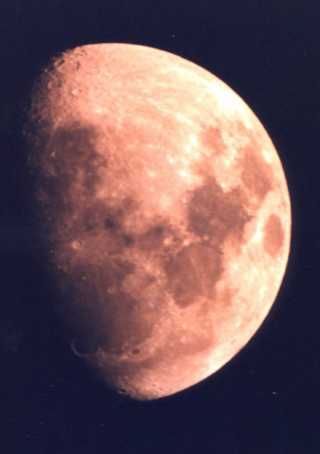 |
| I thought you might like to see my first astrophoto with the ETX125. This was shot on 11-18-99 using prime focus, ASA 400 film at 1/125 of a second. Some slight contrast work with Photoshop 4.0. |
| John Zito (jzito@neo.lrun.com) |
|---|
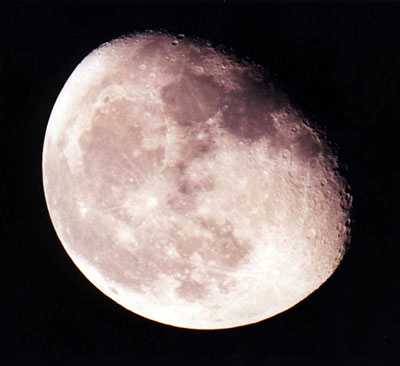 |
| Here is my first ETX-125EC photograph of the Moon. I took the picture about three weeks ago in Stow, Ohio. (semi-urban setting) I shot through the ETX-125EC with my Nikon N90 using an electronic cable release. The film was Kodak Royal Gold 400. The exposure was automatic through the Nikon's meter. Over all I've been very pleased with my 125. Looking forward to more clear nights. |
| Mike (ATATCmdr23@aol.com) |
|---|
|
i like your site... i have an etx90. i have taken pictures using the #64. it was a bit of a pain in the ass until i used a canon f-1 which has a mirror lock up feature. basically, you find, focus and get ready to snap the picture, then you flip up the mirror, wait about 5-10 sec, and take the pict with a shutter release cable. i was considering getting the basic camera adapter also. i have taken a few pictures of the moon and in a month or 2 when saturn and jupiter rise some more, ill try them. i have a casio qv-11. dis it worth putting batteries in it for this? mason.gmu.edu/~mdono/telepicts.html |
| Joel Aron (frickin@earthlink.net) |
|---|
 |
| My name is Joel Aron, and a proud owner of a new ETX125. Having the telescope for about a month, I've fallen in love with it, and just about spent every damn cent I own on getting my digital camera setup working correctly. Well...after finding this web site: www.wesley.net/cp950/Tmount/ I was able to get everything I needed in getting my Nikon CoolPix950 shooting right down into a TeleExtender at an eyepiece. I have yet to find a way to get the tripod from swaying/vibrating, but it's mostly because I'm on a wooden deck. Time for a field trip to the mountains. The Moon was shot with a 26mm eyepiece in a Barlow with the lens removed once again. There is a very light 'un-sharp' mask on the image, however, that seemed to cause a slight 'moldy' green look to appear on the image. This was shot without the polar filter to get the camera to work with a faster shutter. |
| J. Barnes (jbnjenny@io.com) |
|---|
 |
| Thanks for your great site. I've always wanted to do this and have found the prefect scope to start. I'd also highly recommend the book "Astrophotography for the Amateur" by Michael A. Covington. It covers different methods, exposure times, film, CCD images, and more. This moon photo is from Austin, TX on 15 Sep 99. It's shot in my driveway, over the neighbors yard light. I used 400 ASA print film with a 50mm, f/2 lens on a Pentax K-1000. The camera is on a separate tripod pointed into the 26mm eyepiece of the ETX90-EC. I focused the telescope and then set the camera on infinity and pointed it into the eyepiece. The best exposure was at 1/8 second. Keep up the great site. |
| Richard Blake (Richard.Blake@compaq.com) |
|---|

|
| First the customary, and well deserved praise for the excellent site. Since buying my ETX-90EC I have found so much of value and interest every visit. The following images would not have been possible without your links to Scopetronix and the pages full of hints and tips. These images were my very first attempts at astrophotography and I was quite pleased with the results. They were taken with a Casio QV-10A bolted to an ETX-90EC though the Series 4000 26mm Plossl with a Moon filter and a Meade X2 Barlow. The site is anything but perfect being East of Reading in the UK. The 'scope was poking out of a first floor window into a very light polluted area, but the ETX still came up with the goods. The variations in image brightness are due to the auto-exposure "feature" of the camera. The resulting images were then downloaded to a PC and a mosaic produced using PSP V5. The rather stylised Moon Model image was the result of mapping the mosaic image onto a sphere and adding a suitable background. I am busy converting a redundant colour QuickCam into a lens free CCD. Using the image software provided with the camera I hope to be able to improve the quality of images in the future. Thanks again for the site, please keep up the great work. Regards, Richard Blake, Reading, England |
| Esteban M. Galva (e.galva@worldnet.att.net) |
|---|
 |
|
First time attempting this. Both astrophotography and sending
pictures via email. Don't know if this is any good but here it goes.
This photo was taken from light polluted chicago. It was taken using a
old Canon T-60 with a Meade Basic Camera Adapter and a Tele-Vue 15 mm
Plossl (eyepiece projection).
Thanks for all the help you have given us thru time with the ETX and it's successors. Great site. |
| Denis JOYE (denisjoye@hotmail.com) |
|---|
 |
|
I greatly appreciate your ETX site and I often use it to choose accessories
for my MEADE ETX 90-EC.
Here joined is a moon photography taken with my ETX 90 EC and a small
Connectic Quickcam BW camera placed at the ETX focus. This photography is a
mosaic composed of several frames.
Best regards |
| "Nick" Michael Martinides (michael.martinides@siemens.at) |
|---|
 |
| Congratulations for Your fantastic web-site ! I have my ETX-90EC since March 1999 and I am very happy with it. It works pretty well and now I have made some photos from the moon. From left to right: 26th April, 23rd May, 21st May and 18th May 1999. My expirience has grown since the first attempt (as You can see: the collection from 26th April does not cover the whole moon and not all pieces were sharp). Best seeing was on 23rd May and from this picture I send You an additional copy. The photos were done with an #64-T-adapter modified for eyepiece-projection. For projection I use a MEADE 4000 Plssl 15mm, color-film with 200 ASA and exposure-times of about 2 seconds. The photos were scanned with my home-pc and assembled with CorelPhotoPaint. If anybody is interested in further details he/she can mail me: michael.martinides@siemens.at, Vienna (Austria) |
| David Tegerdine (david@teg1.demon.co.uk) | I finally got my ETX-90/EC on Wednesday (there's a 6 week lead time here in the UK) and I have had a go at some astrophotography using my Kodak DC260 digital camera. I was quite pleased with my first ever effort so I have placed a few images on the web for you to look at and perhaps copy onto your photography pages. You can see them at http://www.teg1.demon.co.uk/etx.htm. The ETX is my 2nd telescope, the 1st being an 8inch Newtonian. The 8inch is a great scope but I rarely have time to get it set up. With the ETX permanently mounted on the tripod, I can just carry it out and do 5 minutes of observing as and when I get a moment to spare. For me the portability and size is far far more important than aperture. Also, optically the ETX is easily as good as the Questar I used to have access to. The Questar did have superb mechanics though. |
|---|
| Mike Newton (mnewton1@bellsouth.net) |
|---|
  |
| The moon shots were taken with a color quickcam with the etx on its own mount at f27. i used a barlow at prime focus.. hope you like them. |
| Rod Humble (rodvik@harmlessgames.com) |
|---|
    |
| I have been following your site for about six months on and off and I just wanted to write and let you know how much I appreciate your efforts. its been a real lifesaver. Like many first time astronomers with too much money in thier pocket i went out and bought a 10" LX200. What a fool. A fine instrument to be sure but the setup time was just something I never took into account. Since I bought my ETX its the only scope I use. All images (moon shots) taken with my first attempt at CCD photos using the 416XT from meade. Take it easy and I think meade should pay you a salary for all the free support you have given their customers. |
| Alberto Marturini (alberto.marturini@netit.alcatel.it) |
|---|
 |
| This photo has been taken in Milan, Italy, on 3-23-1999 with an ETX and a B/W CCD camera connected at prime focus. I used a Snappy parallel video capure device to get the image and W25 red filter to reduce the light. If you like more information please have a look at my web page: members.xoom.it/amarturini/. |
| Vern Westervelt (bigvern@jps.net) |
|---|
 |
| Several have asked me to send a single frame representation that the configuration I listed presents. Here is one frame that I thought was particularly detailed on the terminator. This is a raw frame, actual size of one "snap". You can see the effect of the auto-brightness taking affect on the ridge of mountains in the top right of the frame. Compare that to the "optimal" zone in the center. |
| Vern Westervelt (bigvern@jps.net) |
|---|
 |
| In October of 1998, after 2 months of reading and developing an interest in amateur astronomy with my 9 year old daughter, I purchased the original EXT90. Much to my pleasure, The Nature Company, where I purchased it, swapped it out 2 weeks ago for the 90/EC at no additional cost (I kept all original packaging and the scope was spotless....which is mostly due to the fact that viewing times during the winter in the Pacific Northwest are few and far between!). Anyway...I wanted to mention this first since I am an avid believer that excellent customer service such as this deserves patronage.
Ok...on to my first experiences. I'm an electronic engineer, and during my "pre-scope" days last year, I read all I could find on CCD astrophotography and such. I came across an article in Sky and Telescope that described a technique that involved a standard B/W security video camera and image averaging. After much searching, I assembled all of the pieces that would allow me to try this out with my new EC. Included is my first attempt at any type of astrophotography of any kind. I will try and keep the summary brief on how this was accomplished and what components I used....as well as lessons learned. Components Used Lessons learned. Image alignment Results I would be very pleased with any feedback/tips that any veterans may have that would help me down this road of addiction that I seem to be rapidly developing. Especially on tips concerning B/W video cameras that may be better suited for this type of video technique. Thanks for the great web page Michael, I hope this image and article is a valid contribution. |
| Jeff Adair (jadair@dnai.com) |
|---|
 |
| My last activity for the first night out with the ETX-90/EC was to try and capture an image of the Moon using some techniques I read about on this site. I fastened a QuickCam to the eyepiece and used a PowerBook 230 to capture the image. I also ran an RCA Video feed to the TV in the house so the wife could see the image w/o having to stand outside in the cold:) I enclosed the image mostly out of vanity since it's "yet another mediocre image of the Moon", but felt compelled to add to the library of info on the ETX. |
| Richard Woodard (wrwoodard@compuserve.com) |
|---|
 |
| Here is another photo, of the full moon, taken 7pm, 1-30-99. Meade ETX, 26mm Plossl, afocal with a Casio digital QV11B, auto exposure. Lightly adjusted in Adobe Photodeluxe 2.0. |
| Jay Essegian (jay.essegian@netmanage.com) |
|---|
 |
| Thanks for the great site! I wanted to share my first ever attempt at astrophotography with you. Here is an image of the almost full moon on December 2, 1998 from my backyard in Litchfield, NH. I used a Canon EOS Rebel G at Prime Focus through my ETX. This 1/100 sec exposure was done with Fuji Superia 400 print film. |
| Robin Miller (Robunos@aol.com) |
|---|
 |
| Here is a photo of the Moon that I took 28/11/98. This is my first attempt at astrophotography with my ETX. I have owned the ETX since the spring, but have had to wait until the dark nights to arrive before using it in anger. It never gets reaaly dark at night during the summer in my part of the UK. The picture shows the Copernicus region of the Moon,and was taken at around 7.00pm GMT (equal to UT) from just North West of Birmingham. I used the 26mm SP e/p supplied with the ETX, with a 2X Barlow of questionable origin, giving 96X. I used the afocal technique with a Canon Powershot 350 digital camera The only processing is to sharpen slightly and reduce the contrast,brightening slightly to compensate. There is some evidence of camera shake visible, I am working on a bracket to hold the camera, so I can use the self-timer "hands off" The ETX is mounted on an EQ mounting used to set for polar alignment, I use the ETX's own mount for pointing as I have the JMI Micromax unit fitted.(see photo). |
| Bruno Najac (sfe@magic.fr) |
|---|
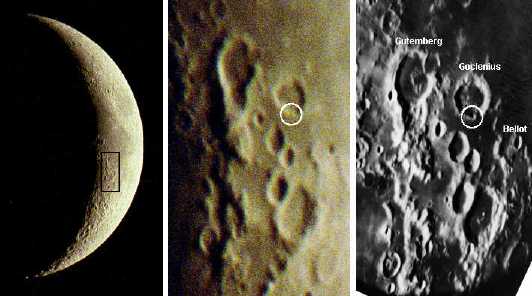 |
| I've tried to measure the resolving power of my etx. The theorical value in arcsec is given by the formula 12/D, where D is the ota diameter in cm. For the etx this gives 12/9 which is 1.3 arcsec. This is a composite of 3 pictures: * the left one has been taken at prime focus - Fuji 800 - 1/2 s - mag 25x. * the central one 5 mn later with a 6,7 mm uwa ep. at 82 mm - Fuji 800 - 7 s - mag 280x. * the right one comes from Viscardy's photographic atlas - high resolution pictures taken with a 520 mm Cassegrain on TP 2415 film - all these pictures reach the theorical resolution which is 12/52 = 0.2 arcsec. On the central picture, one of the smallest visible craterlet is located down in Goclenius crater (a bit faded by jpg compression). To measure this craterlet, we know that Bellot crater is 15 km wide. With the right picture we can think that the craterlet is about 5 km wide. The average moon distance is 380,000 km. So we can compute the apparent field (AF) of the craterlet : tg(AF)=5/380000 and AF=2.7 arcsec. Due to air turbulence and exposure time (7s) the central picture is slightly blurred. I think possible very best result with a CCD device. |
| Bernard Allouche (geomatiq@certu.fr) |
|---|
  |
| Please find here my "best-of" made this sommer from my flat in Lyon (France). I used Paint Shop Pro for assembling, and enhancement. Slide 100 Asa for the Moon. Moon: 3000 mm 1/8s. Detail of the Moon: 12000mm 1s. Thanks for your site and sorry for my bad english. If you need, please mail me at this adress : geomatiq@certu.fr , with the mention "A l'attention de Bernard Allouche" |
| sbinkley@mindspring.com |
|---|
 |
| Thanks for the great site with lots of good information. I've attached a shot of the moon taken with a Kodak DC260 digicam using eyepiece projection with a Meade 24.5 mm in my ETX. The camera was set to infinity focus at the telephoto setting and hand held over the eyepiece. I used the camera's external flash sync mode (with no flash attached!) to set the aperture to f5.6. Even handholding the digicam and using the camera LCD to line it up, I got lots of successful shots of the moon. These digital camera sure make it easy to experiment! |
| Michael Rochfort (michael@isd.cs.nsw.gov.au) |
|---|
    |
| - Earthshine taken at 6:15pm Australian EST on August 24th, 1998. Nikkormat EL camera body attached to the Meade ETX on Fuji Super G800. 1 second exposure. - Nearly full moon on 9th August, 1998. Nikkormat EL at prime focus of the Meade ETX on Fuji Super G800 exposed for 1/1000 sec. Contrast increased with Paint Shop Pro. - First quarter moon at 11:15pm AEST on 1st September, 1998. Film and equipment as for 24 August image. Exposure 1/500th second. - Soon after occultation of Jupiter by the moon on 4th October 1998 from Sydney, Australia. Fuji Super G800 for 1/500 second with a Nikkormat EL body at the prime focus of the Meade ETX. Time is 6:41 pm AEST. Jupiter is fairly dim in this image due to the great difference in exposure required for the full moon (1/1000sec) compared to Jupiter (1/60sec) I have much trouble eliminating movement in images taken with my ETX in the 1/4sec to 1/500sec range, despite mirror lock-up and cable release. I use the ETX on the ground with its own legs when taking photographs. I used Fuji 800 for the above batch of shots, and found that a few of the shots taken at 1/500 sec had movement, while 1/1000 sec just about guaranteed sharpness. Strangely, a 1 second exposure gives better sharpness than 1/500 sec. I feel that I should be obtaining better results than this. Have you had any such problem? |
| Joao Leal Silva (joaolealsilva@mail.sonet.pt) |
|---|
 |
| First i'd like to thank for a nice site like yours. To contribute i decided to send a mosaic i've done with a WebCam2 from creative atached to an ETX. I dissansembled the cam so i could use it's CCD chip much more bether than in afocal picturing. You can find some more things about me and my friends in Astronomy in http://www.sonet.pt/geaaa. The site it's in Portuguese. |
| Joan Vidal Llid (vidalm@ctv.es) |
|---|
  |
| I am an ETX owner from Spain. The moon (left). Kodak gold 200Asa Color print film. 26mm eypiece, 1/15 seconds. The moon (right). Kodak gold 200Asa Color print film. 12,4mm eypiece, 1/8 seconds. |
| Bill Hardin (bhardin@bellarmine.edu) | |
|---|---|
  |
|
| Here are some more shots of the moon. I just got some Paul Rini eyepieces. These were shot from my video camera setup with the 50mm Rini. I recommend these eyepieces highly. For the price of my TeleView 32 mm Plossl (which is my favorite eyepiece) I got 7 modified Plossl eyepieces from Paul Rini. They aren't quite as nice but they are not bad either. Certainly, new ETX owners should consider them, especially the 15mm, 33mm, and 50mm. | |
| Bill Hardin (bhardin@bellarmine.edu) | |
|---|---|
 |
 Click image to begin movie. It will appear in a new window. |
| I bought an ETX 7/31/98. It is OK, I like the portability. I was lucky with this shot because 1min 30 sec into my first video I got the plane in front of the moon. I used a Sony 8mm video camera with eyepiece projection. I put the video camera on a separate tripod (the ETX was on a Bogen tripod). This is shot with the Meade series 4000 SP 26mm eyepiece. I have since gotten a TeleView 32mm Plossl which gives a larger field-of-view as well as much more light. |
|
| Al Peck (PEKTRONICS@aol.com) | |
|---|---|
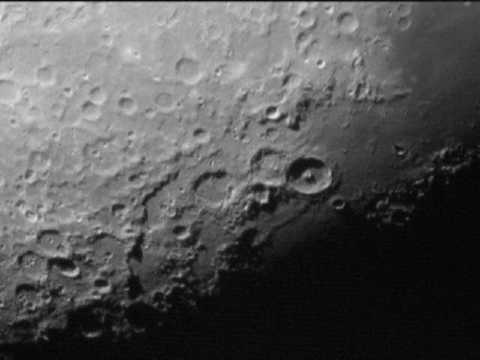 |
|
| Love your site!! My story is I bought my ETX to combine three hobbies...astronomy, electronics & computers. The attached photo was taken with a home built CCD camera hooked up to the camera port of the ETX. All parts, tax and license 'n out the door, minus the lap-top computer, around $200. The best part is, it is moderately easy to put together with some hand tool and solder skills. Do need a computer to capture the images, a lap-top is nice for the field. Lots of area here for experimentation ie I found the CCD chip is very IR sensitive. Maybe I could get better pix with an IR filter, or what could I get with an IR pass filter?? HMMM Some details of the homemade CCD are on the Guest Contributions page. |
| Bruno Najac (sfe@magic.fr) | |
|---|---|
 |
 |
| For astrophotography I first tried the T adapter at prime focus. I think it's not convenient because the camera's weight throws the etx out of balance and strains both gear and dec mechanism. Second I tried the basic camera adapter (not the Meade one) which fits perfectly. As it comes into the eyepiece holder, rather close the dec axis, the reverse torque becomes light enough for long stays. Btw please notice that you can use the 26 mm ep with this adapter, but after taking off the rubber eyerelief. For visual observations between photos I've set an erecting prism at prime focus and just need to switch the mirror. Here is a lunar photo taken with basic camera adapter + swa 13,8 mm ep. This pic shows Gassendi crater (70 miles diameter) and Mare Humorum. Kodak Gold 100 - 2 s. exposure - self-timer 20 s. - Nikon F 801 - Photoshop cropped, flipped and contrast enhanced. Note : the only inconvenient of using camera adapters vs prime focus is that images are flipped due to mirror presence. Now I find better to use a variable-projection camera adapter which has a sliding part and allows variable magnifications. Roughly, the full extension gives 2x more, as if you had added a barlow. Last days I made some snaps of Jupiter and Saturn with an uwa 6,7 ep at full extension (about 370x). I will further post results, I'm waiting after processing. | |
| Corrado Pido' (corra@ossola.it) | |
|---|---|
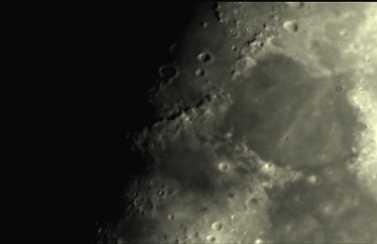 |
|
| Photo of the moon with ETX with EDC1000 High Resolution Electrim CCD with 1 ms. of exposure time. The image is also treated with Adobe Photoshop and Deep Sky. | |
| Allan Gould (Allan.Gould@dah.csiro.au) | |
|---|---|
  |
|
| A while ago I said that I'd had some fun playing with the quickcam and ETX. I thought I'd sent a few photos taken with it so that you can see what is possible. Its worth mentioning that the ETX and quickcam are good together due to the latters very light weight and ease of operation. Regards, Allan | |
| Michael Russo (mrrusso@ibm.net) | |
|---|---|
  |
|
| These images were made in NYC, on July 5 1998 . A B/W Quickcam was strapped to the 26mm lens, a 2x barlow and of course the ETX. Your pages are very informative and have given me many ways to spend money and enjoy the summer skies, -thanks Michael Russo, Bronx NY. | |
| Don Anselmo (dranselmo@uswest.net) | |
|---|---|
 |
|
| The attached JPEG of the Moon is scanned and sharpened in Photoshop 4. To save bandwidth I compressd what was a 16MB file. It is a little sharper than my first attempt. Film was Agfa 400 print. The camera is an old Nikon F with a lockable mirror. I used the self timer to minimize shake. | |
| Tiffany Shockley (tiffany1@home.com) | |
|---|---|

|
|
| It seems the only way to get a clear photo, is to use the afocal technique. The moon was so beautiful last night, I could not resist taking more pictures. So I have sent you 3 more I took using my Casio Digital camera. These were done using the standard 26mm eyepiece and a barlow lense. I want to try with a higher power next time. | |
| Termite (termite@usit.net) | |
|---|---|
 |
|
| Taken with a Casio QV700. Using a Sirius 7.5mm Plossl Eyepiece Projection. The QV700 overexposed it just a bit, but I am still pretty happy with the results. Another reason why it's not the best in the world is the fact that I do not have a very steady hand. :) | |
| Tiffany Shockley (tiffany1@home.com) | |
|---|---|
 |
|
| I took this with a Casio digital camera. I need to find the adapter so I can center it next time. I have only had the telescope for week. | |
| Ed Pershey (pershey@en.com) | |
|---|---|

|
|
| Hadn't done much with the ETX this spring or summer...cloudy skies and long work days here in Cleveland. Last night, though I borrowed a Sony Mavic digital camera (10x zoom , saves to diskette) for some trial lunar photography. Set up the ETX and got it tracking the first quarter moon last evening (July 2). Held the Sony up to the eyepiece, but at first I got zilch. Then I increased the brightness control on the Sony. It uses a 2x2 lcd screen for framing. A bright round circle appeared, but it sure didn't look like much. I had the Sony set on "wide angle" so I then zommed in. Voila! There were images of the moon's surface. I was hand holding the Sony, which is rather heavy since it has a built in disk drive. I was wobbling all over the place, but I quickly discovered that I could pan across the real image. The eye relief on the 26mm ETX eyepiece is long, so I had to try to hold the Sony's lens as close as possible to the focal plane of the image. I tried clicking away. After a few shots, I set the camera into "play" mode, and took a look a the images that I had just saved to diskette in the camera. Hey, I actually had some usuable images. Took about 30 more and retired for the night. Today I copied the image files (the Sony saves to jpeg format) to my home computer and loaded the images in to Paint Shop Pro. Converted the images to grey scale and adjusted brightness and contrast to get the best overall image. Did some cropping, too. The images all were vignetted, and some were blurry as the atmospheric conditions were typical for an early summer evening: clear, then blurry, then moments of clarity again. However, I was suprised at the results. Here are two of my best first attempts with digital, hand-held photography through the ETX. These are at least as good, but I think even better, actually, than my attempts last year with traditional fast film and 35mm camera. In fact, I cropped one shot and printed it out on my HP722 printer...it came out looking pretty darn good. I'm going to experiment some more with ways of holding the Sony steadier; think about ways of coupling it to the ETX; and trying some shots without the eyepieces. I might also try to drag myself out of bed some early AM to try some shots of Jupiter...if my sorry brain and the Cleveland weather cooperate! -- Edward Jay Pershey Cleveland, Ohio |
|
| Ken Janik (janikk@iris.ece.orst.edu) | |
|---|---|
 |
|
| Prime Focus shot of the moon. It was my first attempt at a photo with the ETX. ISO 200 Kodak Color Film. 1/15 second. | |
| Steve Myers (myersj@tidalwave.net) | |
|---|---|
   |
|
| Great site... you've really helped me get started (for the second time in my life) with astronomy! It's a fantastic resource for ETX users. I'd like to share some recent work made possible with the advice from your site. These digital photos of the moon were taken on 8 June 1998 with the ETX and a color QuickCam. The first image is at 48x using 26mm eyepiece projection. The other two images are at 96X using the 26mm eyepiece projection with the 2X barlow. All images were enhanced using Microsoft Photo Editor. | |
| Philippe Roux-Dessarps (prd@gol.com) | |
|---|---|
 |
|
| Greetings from Tokyo, The attached picture does not bring anything new to your already fantastic gallery except that it was taken from Tokyo, Japan, one of the most populated, light polluted and atmosperic polluted city in the world !!!! This picture has not been re-touched a single pixel. It was taken with the 26mm eyepiece and the color quickcam. The camera has not (yet!) been opened and taken apart, it was attached to the ETX with the great idea from Kit-ying Hui in your guest contributions. Taken on May 18th '98.
Thank you for your website that: |
|
| Michael Yancey (mlyancey@bellsouth.net) | |
|---|---|
 |
|
| Here is the best turn out of 24 pictures taken with Cannon EOS Rebel G. Prime focus- Kodak Gold 400 at 1/125 sec. My first attempt at astrophotography bombed out, over exposure on 24 tries. I'll keep trying different film and speeds until I find one that makes me happy. | |
| Peter Zimmerman (peterz@erols.com) | |
|---|---|
 |
 |
 |
 |
| copyright Peter D. Zimmerman 1998
When I bought my ETX I knew that I was leaving the joys of deep sky astrophotography to the Di Ciccos and Wares who have far larger instruments and all the skill and equipment to do superb work; I just wanted to look at pretty things. But the lure of doing some photography through the ETX proved irresistable, and since I am in the middle of writing a book about the use of the Minox subminiature camera, the obvious choice was to mount a Minox LX in the adapter available for binocular use and to clamp it to the eyepiece. This technique is known as "afocal photography" since the camera lens is set at infinity and (with luck) the image formed by the eyepiece is at infinity as well. The effective f-stop of the system is determined by the Minox camera's 15mm focal length and the exit pupil of the eyepiece. For those unfamiliar with subminiature cameras, the Minox negative is a scant 8 x 11 millimeters in size. With the 26mm Super Ploessl alone, that means that the system is close to t/10 and with a 2x Barlow it becomes about t/20 -- interestingly enough this is comparable to or faster than the OTA at prime focus. The film was Kodak's Technical Pan 2415 developed in Agfa's Rodinal diluted 1:100 in a solution of water containing 56 gm/liter of anhydrous sodium sulfite for 6 minutes at 68F. Anyone interested in further details should write with specific questions. I rate Technical Pan at an EI of 40 in pictorial work, and exposed the "Barlow free" shot, the first picture, at about 1/60 second and the picture with the Barlow, the second shot, at about 1/30; the image through the combination is slightly underexposed and that through the eyepiece alone just a little overexposed. 8x10 prints were made to judge the pictures, but the final scans were done at 300 dpi from 6x8 inch prints. Both pictures were cropped electronically to show about the same area of moon and sky, thus sparing Mike's site from having to store pictures which were mostly black. The pictures were touched up moderately (scratch removal; contrast and brightness adjustments) and then very slightly edge sharpened. Incidentally, the 8x10" prints hold up remarkably well and are now pinned to my office wall. The ETX is the Minox of telescopes! And the combination works very well indeed. |
|
| Kit-ying Hui (khui@csd.abdn.ac.uk) |
|---|
 |
| This picture was taken on the night of 4 Feb 1998 with the ETX & color QuickCam. Here you can see the moon at 48x (26mm projection). The resolution is 320x240 with auto-hue of QuickPict but manual-brightness control. The ETX flips left and right so the actual moon was a mirror image. For more QuickCam photos, see Kit-ying's www.csd.abdn.ac.uk/~khui/astronomy.html Astrophotography web page. |
| Rod Laird (Rod_Laird@compuserve.com) |
|---|
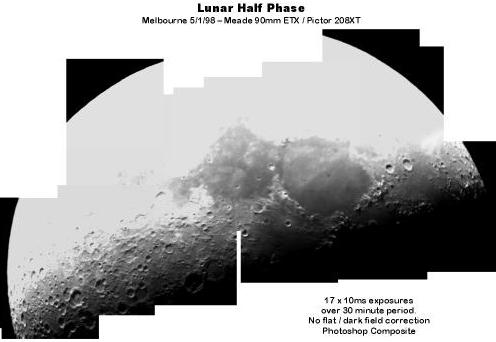 |
| I have tracked these pages since March last year, eager to see what sort of performance people wring out of their ETX's. I picked one up last year when in San Francisco in time to enjoy Hale Bopp in a way not possible down home in Melbourne. With the Summer Holidays here at last I have had time to hitch the Pictor 208XT I acquired at the same time up to my little baby - and have been delighted with the results. I thought I would pass them on for your interest and possible presentation on your web site if they are interesting enough... Given these were the very first efforts I was pleased and impressed with the ETX! |
See the Guest Lunar Archive 1996-97 for photos taken 1996 and 1997.
Return to the top of this page.
Go back to my ETX Home Page.